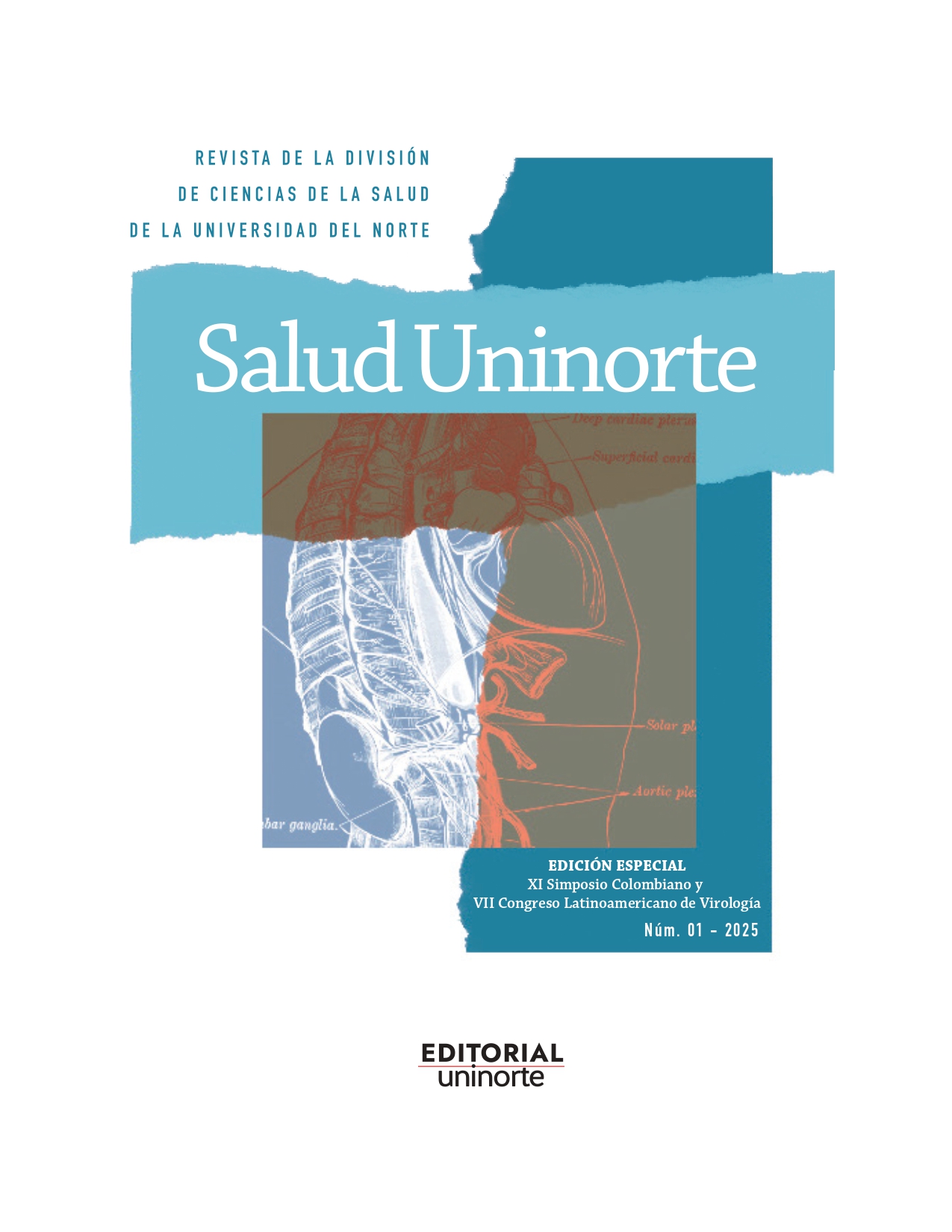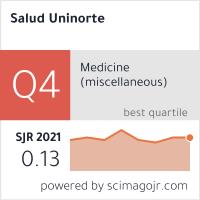Prevalence of Hepatitis B and C Markers Among Waste Pickers at the Marmolejo Dumpsite, Quibdó, Chocó, Colombia
DOI:
https://doi.org/10.14482/sun.01.205.161Palabras clave:
hepatitis B, hepatitis C, dumpsites.Resumen
Introduction: Urban solid waste pickers are at risk of biological hazards through exposure to sharps and body fluids. In Brazil, hepatitis B virus (HBV) marker prevalence in this group ranges from 4.3% to 33.4% and hepatitis C virus (HCV) markers from 1.6% to 12.4%, exceeding general population levels. In Colombia, no prevalence data exist for this occupational group. In Chocó Department in 2015, HBsAg prevalence was reported at 2.2%.
Methods: We conducted a cross-sectional census in 2024 including 64 active waste pickers at the Marmolejo dumpsite in Quibdó, Chocó, in the Pacific region in Colombia (49 Afro-Colombians, 3 Indigenous). Sociodemographic and occupational data were collected. Venous blood samples were drawn on-site, centrifuged, and refrigerated before processing. In 47 waste pickers, HBsAg was determined with the H&M test HBsAg RST rapid assay, and anti-HCV with the Bioline™ HCV rapid test. The study was approved by the Ethics Committee of the National School of Public Health. A logistic regression analysis did not find a difference in the group of 47 versus the group of 20 who did not allow the test to be developed.
Results: The median age was 38 years (IQR: 28–49); median time in the trade was 10 years (IQR: 3–16); 40 were women. In the previous year, 54 reported work accidents, 17 involving sharps; 29 used gloves and 37 boots in fair/good condition. Usage of alcohol, tobacco, and marijuana were 48.4%, 23.4%, and 3.1%, respectively; none reported injecting drug use. Illiteracy was 21.9%; 80.6% had health insurance, only one had access to pension, and none had occupational risk coverage. A total of 59.4% were from Chocó and 84.4% had at least one family member also working at Marmolejo. HBsAg and anti-HCV prevalences were both 0% (95% CI: 0–7.5%).
Conclusions: The 95% confidence intervals (0.0–7.5%) suggest that the true prevalence is at the lower levels of the estimates from similar Brazilian populations. This may reflect the long-standing national HBV vaccination program and the absence of injecting drug use. Nonetheless, high occupational risk was evident underscoring the need to sustain hepatitis prevention and integrate screening within the healthy environment strategy to prevent future viral introduction and transmission.
Publicado
Cómo citar
Número
Sección
Licencia
(COPIE Y PEGUE EL SIGUIENTE TEXTO EN UN ARCHIVO TIPO WORD CON TODOS LOS DATOS Y FIRMAS DE LOS AUTORES, ANEXE AL PRESENTE ENVIO JUNTO CON LOS DEMAS DOCUMENTOS)
AUTORIZACIÓN PARA REPRODUCCIÓN, USO, PUBLICACIÓN Y DIVULGACIÓN DE UNA OBRA LITERARIA, ARTISTICA O CIENTIFICA
NOMBRE DE AUTOR y/o AUTORES de la obra y/o artículo, mayor de edad, vecino de la ciudad de , identificado con cédula de ciudadanía/ pasaporte No. , expedida en , en uso de sus facultades físicas y mentales, parte que en adelante se denominará el AUTOR, suscribe la siguiente autorización con el fin de que se realice la reproducción, uso , comunicación y publicación de una obra, en los siguientes términos:
1. Que, independientemente de las reglamentaciones legales existentes en razón a la vinculación de las partes de este contrato, y cualquier clase de presunción legal existente, las partes acuerdan que el AUTOR autoriza de manera pura y simple a La UNIVERSIDAD DEL NORTE , con el fin de que se utilice el material denominado en la Revista
2. Que dicha autorización se hace con carácter exclusivo y recaerá en especial sobre los derechos de reproducción de la obra, por cualquier medio conocido o por conocerse, comunicación pública de la obra, a cualquier titulo y aun por fuera del ámbito académico, distribución y comercialización de la obra, directamente o con terceras personas, con fines comerciales o netamente educativos, transformación de la obra, a través del cambio de soporte físico, digitalización, traducciones, adaptaciones o cualquier otra forma de generar obras derivadas. No obstante lo anterior, la enunciación de las autorizaciones es meramente enunciativa y no descartan nuevas formas de explotación económica y editorial no descritas en este contrato por parte del AUTOR del artículo, a modo individual.
3. Declara que el artículo es original y que es de su creación exclusiva, no existiendo impedimento de ninguna naturaleza para la autorización que está haciendo, respondiendo además por cualquier acción de reivindicación, plagio u otra clase de reclamación que al respecto pudiera sobrevenir.
4. Que dicha autorización se hace a título gratuito.
5. Los derechos morales de autor sobre el artículo corresponden exclusivamente al AUTOR y en tal virtud, la UNIVERIDAD se obliga a reconocerlos expresamente y a respetarlos de manera rigurosa.
EL AUTOR
















